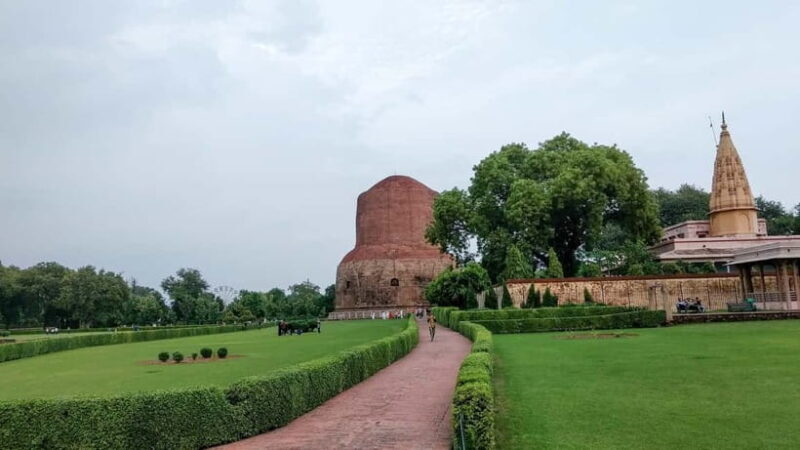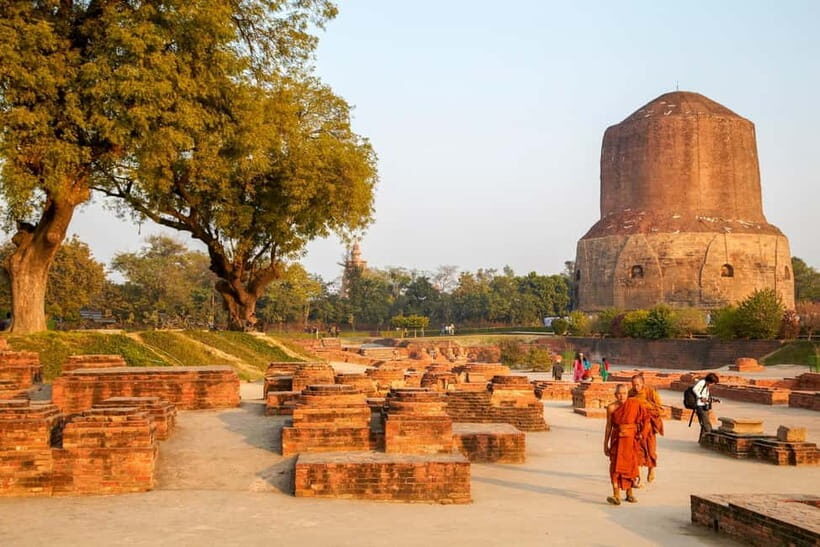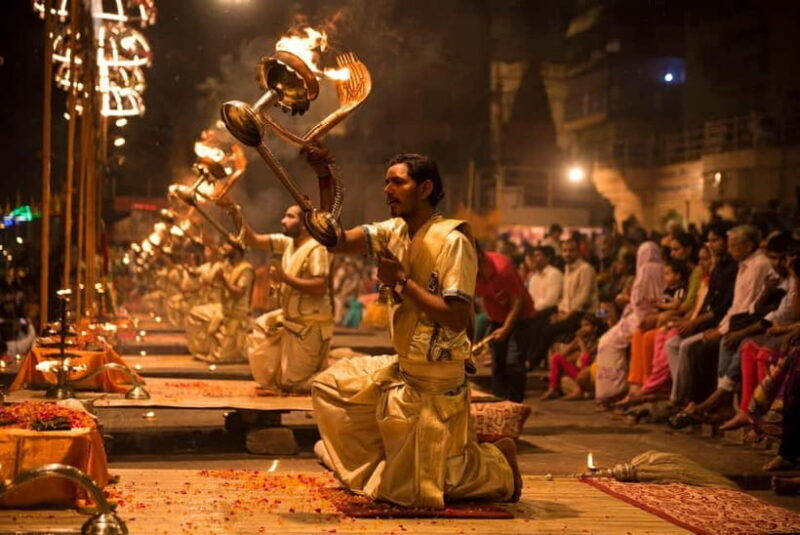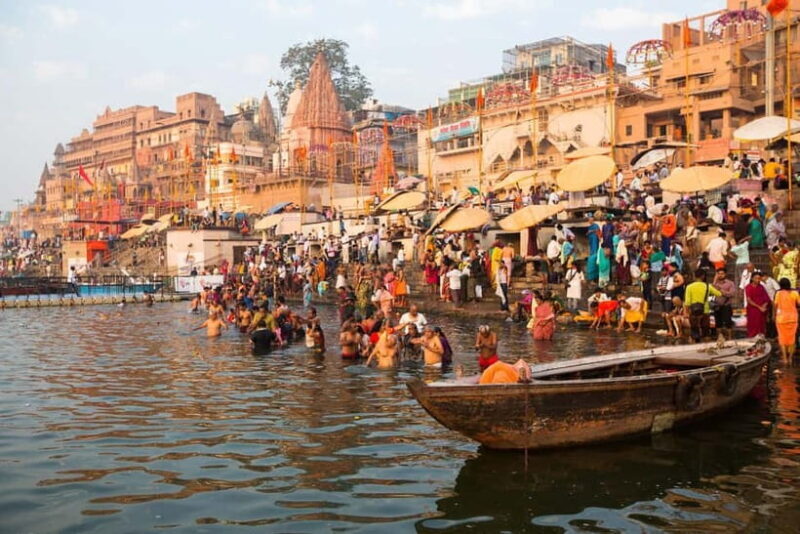Six Days of Sacred Discovery: A Practical Guide to the Buddhist Pilgrimage Tour
Picture this: a journey that takes you through the heart of India’s most revered Buddhist sites, from the bustling ghats of Varanasi to the tranquil birthplaces in Nepal. For $346 per person, you’ll spend six days exploring places like Sarnath, Bodhgaya, Kushinagar, and Lumbini, retracing Buddha’s steps from enlightenment to his birthplace. Led by knowledgeable guides (with optional expert accompaniment), this tour offers a satisfying mix of history, spirituality, and regional culture.
What truly makes this experience special? First, we love the way it combines active sightseeing with moments of reflection—like witnessing the Ganga Arti in Varanasi, and sitting beneath the Bodhi Tree in Bodhgaya. Second, the comprehensive itinerary visits both well-known pilgrimage sites and lesser-trodden ruins, giving a broader perspective of Buddhist history in India and Nepal.
One potential drawback? The driving distances between sites can be long, which might be tiring for some travelers. The tour is best suited for those who enjoy culture and are comfortable with a packed schedule. If you’re eager to deepen your understanding of Buddha’s life and spiritual journey, this trip offers an authentic, well-organized introduction.
This tour is ideal for history buffs, spiritual seekers, and curious travelers who want a balanced experience of sightseeing, cultural exchange, and personal reflection. If you’re comfortable with group travel and value local guides’ insights, you’ll find this journey rewarding.
Key Points

- Comprehensive itinerary covering major Buddhist sites across India and Nepal.
- Authentic experiences like Ganga Arti and meditation in monasteries.
- Well-organized logistics with private transfers and included entry tickets.
- Value for money at $346, considering accommodation, guides, and entrance fees.
- Flexibility with the option to reserve and pay later, adding peace of mind.
- Suitable for travelers interested in history, spirituality, and culture.
Exploring the Sacred Sites of India and Nepal

When we think about a Buddhist pilgrimage, the significance of visiting Bodhgaya, Sarnath, and Kushinagar is undeniable. This tour offers a deep dive into the core sites that commemorate Buddha’s enlightenment, teachings, and final moments, making it a meaningful experience for anyone interested in Buddhism or Asian history.
Planning more time in Varanasi? We've covered other experiences worth considering.
Day 1: Varanasi and Sarnath — Where Buddha Gave His First Sermon
We arrive in Varanasi, a city long associated with spiritual pursuits, and transfer to our hotel. The next stop is Sarnath, where Buddha delivered his first sermon after attaining enlightenment. Here, you’ll walk among ancient stupas and monasteries, such as the Dhamekha Stupa, which is richly carved and steeped in history.
Our guide (if you opt for one) will explain how this site is central to Buddhist practice. Visiting Mulagandh Kuti Vihara and the archaeological museum provides context to the spiritual significance of Sarnath. We loved witnessing the Ganga Arti in Varanasi’s evening, a deeply moving ritual that combines music, light, and devotion on the riverbank. It’s a moment that captures the city’s spiritual intensity.
Day 2: Bodhgaya — The Enlightenment Place
Next, we drive to Bodhgaya, the star of the journey. This UNESCO World Heritage site is home to Mahabodhi Temple, where Buddha attained enlightenment beneath the Bodhi Tree. The temple’s intricate carvings and towering spire are striking, and you’ll feel a sense of reverence walking through this sacred space.
We particularly enjoyed exploring the sacred sites and monasteries around the main temple. The atmosphere is peaceful yet vibrant, as pilgrims from around the world come to meditate and pay homage. The Bodhi Tree itself, beneath which Buddha meditated, remains a focal point for meditation and reflection.
Day 3: From Austerities to Academia — Nalanda and Rajgir
On the third day, the tour ventures into the past. Dungeshwari Cave Temples offer a glimpse into Buddha’s ascetic practices. Visiting the Sujata Village Temple, where Buddha is said to have received his first meal after enlightenment, adds a personal touch.
Later, we visit Nalanda, home to the ancient Nalanda University, once a great center of learning. As you walk through the ruins, you get a real sense of the scholarly environment that once attracted students from across Asia. The XuanZang Memorial Hall offers fascinating insights into Buddhist studies.
In Rajgir, the Vishwa Shanti Stupa commands a panoramic view of the valley, and Griddhakuta Hill (or Vulture’s Peak) provides a serene spot for meditation. The Bimbisar Prison, though modest, adds historical depth, linking the site to Buddha’s visits and teachings.
More Great Tours NearbyDay 4: Tracing Buddha’s Final Days — Vaishali and Kushinagar
Today’s focus is on Buddha’s last days and passing. In Vaishali, you’ll see the Ashokan Pillar, a towering relic of ancient India, and the Ananda Stupa. Walking through the ruins, you can imagine Buddha delivering his last sermon here, a pivotal moment in Buddhist history.
In Kushinagar, the Nirvana Temple marks Buddha’s final moments in physical form. The Rambhar Stupa and Kesariya Stupa offer impressive sights—Kesariya being the largest Buddhist stupa in the world, a real highlight for architecture lovers.
Day 5: From Death to Rebirth — Kushinagar to Lumbini
We continue to Kapilvastu, Buddha’s childhood home, exploring ruins like Tilaurakot. Walking through these ancient grounds brings a sense of historical continuity, connecting Buddha’s early life to his later enlightenment.
Arriving in Lumbini, Nepal’s sacred birthplace of Buddha, is a spiritual highlight. The Maya Devi Temple, where Buddha was born, is the centerpiece, surrounded by monasteries from various countries. The Eternal Peace Flame and Myanmar Golden Temple show the global nature of Buddhism today.
Day 6: Returning with Spirit and Stories
On the final morning, we reflect on what we’ve seen and learned, then transfer back to Varanasi or the airport for departure. The tour’s logistics are straightforward, with private transfers and included entry fees, allowing you to focus on the experience rather than the details.
Why This Tour Offers Great Value

At just $346, the price covers accommodation in 3-star hotels, all transfers, entrance fees, and breakfast—an impressive package considering the breadth of sites visited. You’re not just sightseeing; you’re walking through history, participating in rituals, and gaining insights from guides who can deepen your understanding.
Although the driving distances can be long, the comfort of private transport and the variety of sites fit well for those eager to see the broader picture of Buddha’s life. The shorter time frame means a fast-paced schedule, so if you prefer slow travel, this might feel a bit rushed. Still, the balance of spiritual sites and historical ruins makes it a meaningful journey.
Who Should Consider This Tour?

This adventure suits travelers with a curiosity for history, religion, and culture, especially those interested in Buddhism. It’s perfect for those who like organized trips with a clear itinerary, as well as people comfortable with some early mornings and long drives. If you want a rundown of Buddha’s life in a manageable timeframe, this tour delivers on its promise of authentic, enlightening experiences.
Frequently Asked Questions

Is this tour suitable for all ages?
It is generally suitable for travelers comfortable with walking, long drives, and a packed schedule. The focus on spiritual sites means some stops involve stairs or uneven surfaces, so mobility considerations matter.
Are accommodations comfortable?
Yes, the tour includes 3-star hotels, providing a good balance of comfort and authenticity. You can expect clean, well-located accommodations with breakfast included.
What should I wear for these visits?
Dress modestly—cover shoulders and knees—especially when visiting temples and monasteries. Comfortable shoes for walking and a hat or umbrella for sun protection are recommended.
Are guides included?
Guides are available if you select that option; they bring valuable context and local insights that enrich the experience. Without a guide, you’ll rely on provided information and personal exploration.
Is transport comfortable?
All transfers are by private vehicle, which means more comfort and flexibility compared to bus tours. The drives between sites are generally smooth, but long.
Can I customize the trip?
The tour is pre-arranged, but with flexible booking and cancellation options, you can adapt some aspects according to your needs—be sure to communicate any preferences in advance.
What is the best time to take this tour?
While not specified, this region’s best travel times are typically during the cooler months, from October to March, avoiding the intense summer heat.
To sum it up, this 6-day Buddhist pilgrimage is a well-crafted, value-packed journey for those eager to explore the spiritual and historical heart of Buddhism in India and Nepal. It balances immersive site visits with cultural insights, making it suitable for curious, culturally-minded travelers. While some long drives are involved, the experience’s depth and authenticity make it a rewarding option for anyone looking to connect with Buddha’s legacy in a meaningful way. If you’re ready for an active, educational pilgrimage with like-minded companions, this trip could be just what you’re looking for.
You can check availability for your dates here:More Tour Reviews in Varanasi
- Agra: Taj Mahal Tour with Professional photographer & Guide
- From Varanasi: Sunrise Boat Tour and Heritage Walk
- Delhi: 4-Day Golden Triangle Delhi, Agra, and Jaipur Tour
- From Delhi: Taj Mahal Sunrise, Baby Taj & Agra Fort Day Tour
- Day Tour to Sarnath with Boating & Ganga Aarti
- Food Tour: Highlights Tour with Tasting &Sunset in Varanasi
